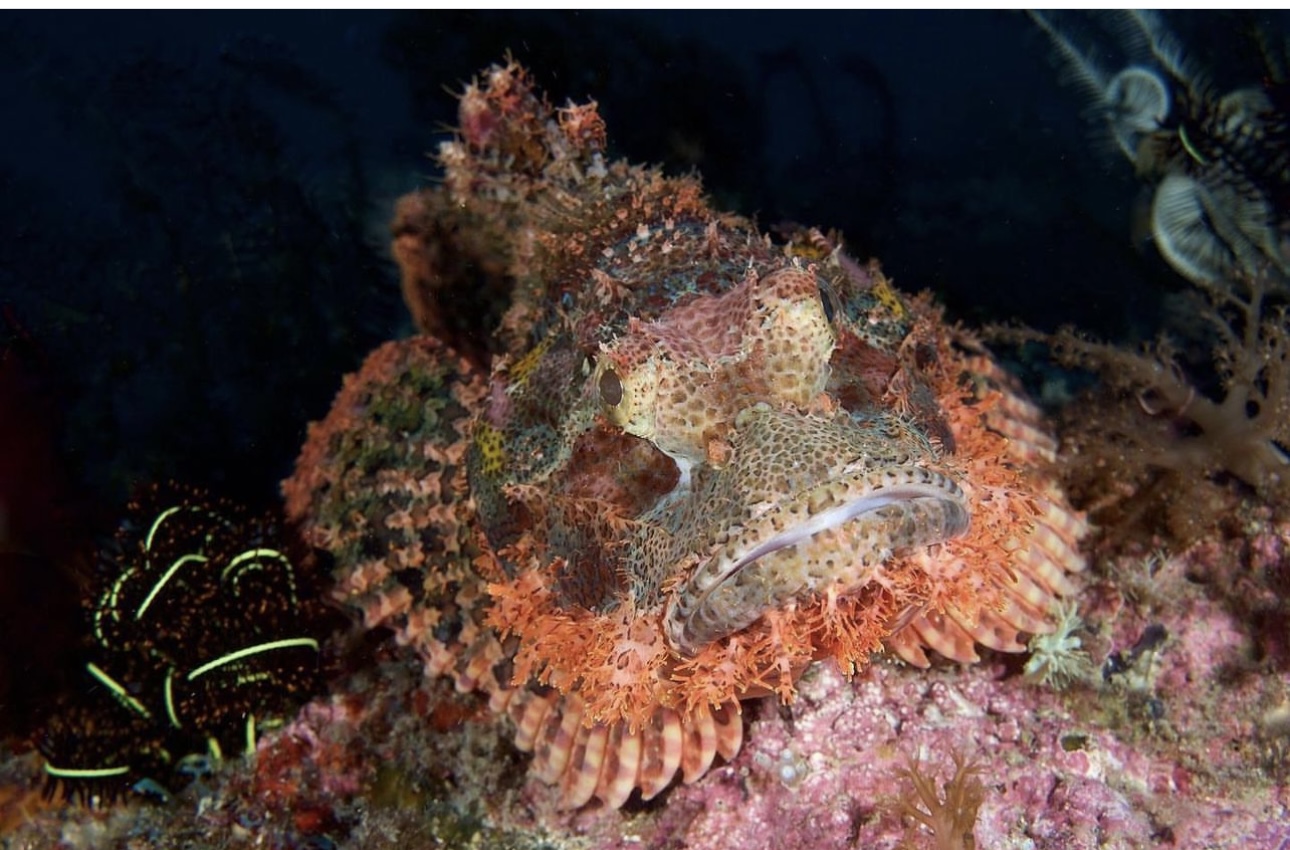
Venomous Marine Life in Melbourne: A Must-Know for Divers
Envenomation happens when venom or toxins get inside another creature’s body due to bites, stings, or punctures. This occurs when an animal directly touches another. Envenomations aren’t common, but they can be really dangerous and need quick first aid. That’s why it’s important for divers to learn about these venomous animals and keep a safe distance from them to stay safe themselves.

Blue-Ringed Octopus
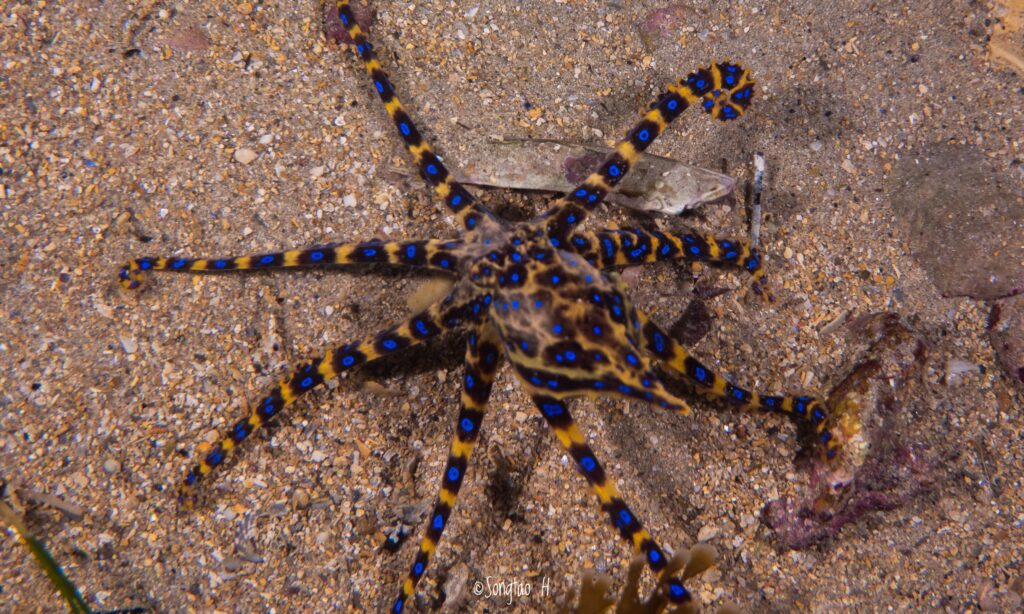
The blue-ringed octopus creates a powerful toxin called tetrodotoxin, which is also found in pufferfish and is very deadly. This venom is made by special bacteria in the octopus’s saliva glands and is more poisonous than any venom produced by land mammals. The octopus uses this venom to catch its prey, like crabs, shrimp, and small fish. It pierces its prey’s tough shell with its beak, injects the venom, and then eats the immobilized prey. The octopus has a parrot-like beak at the base of its arms that it uses to deliver venom through bites. This golf-ball sized powerhouse packs enough venom to kill 26 humans within minutes, and can lead to death within minutes if not treated.
While blue-ringed octopus bites are uncommon due to their docile and shy nature, they might bite when provoked or threatened. It’s extremely important not to pick them up. These octopuses only show their blue rings when they’re upset, so it’s best to avoid any small octopus altogether.
Exercise caution while exploring rock pools, cracks, or crevices, and avoid picking up empty shells when diving, as the octopus might use these spaces as their habitat or shelter.
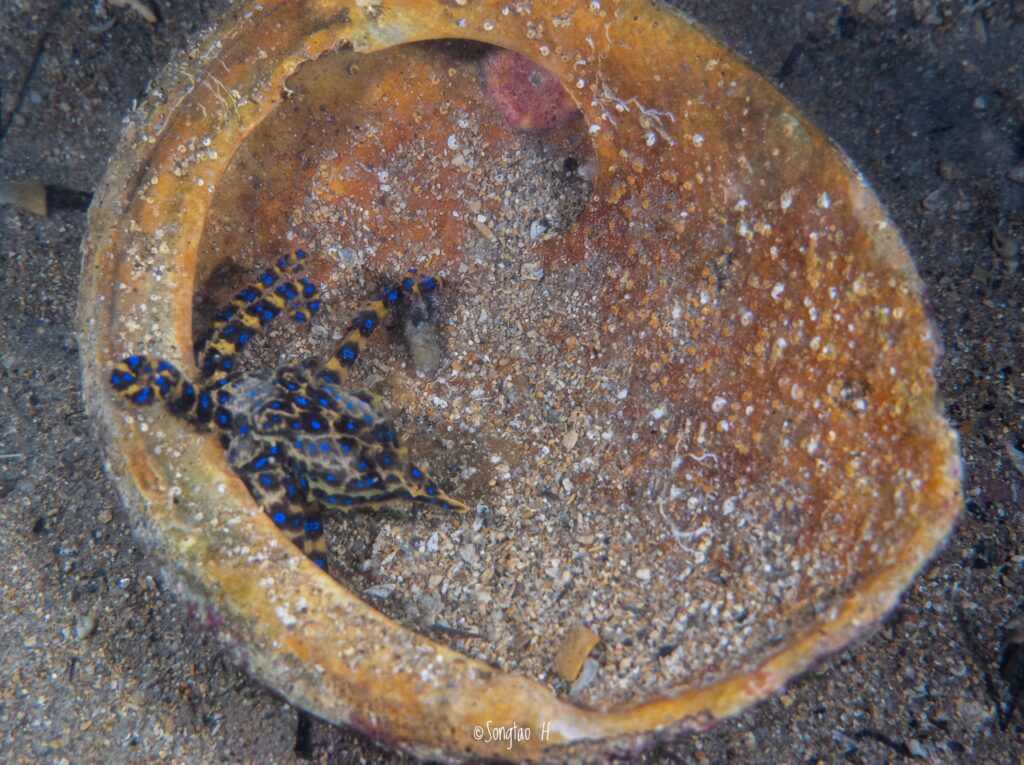

If you’re interested in observing the secretive and dangerous Blue-Ringed Octopus in its native environment, there’s a significant opportunity to encounter them during a night dive at Blairgowrie Pier. Recognized as one of the ocean’s most venomous creatures, these octopuses are seldom spotted by the majority of divers due to their shy behavior. Join Ocean Divers’ fun dive, and our experienced dive guides will locate these creatures for you!

Cone Snail
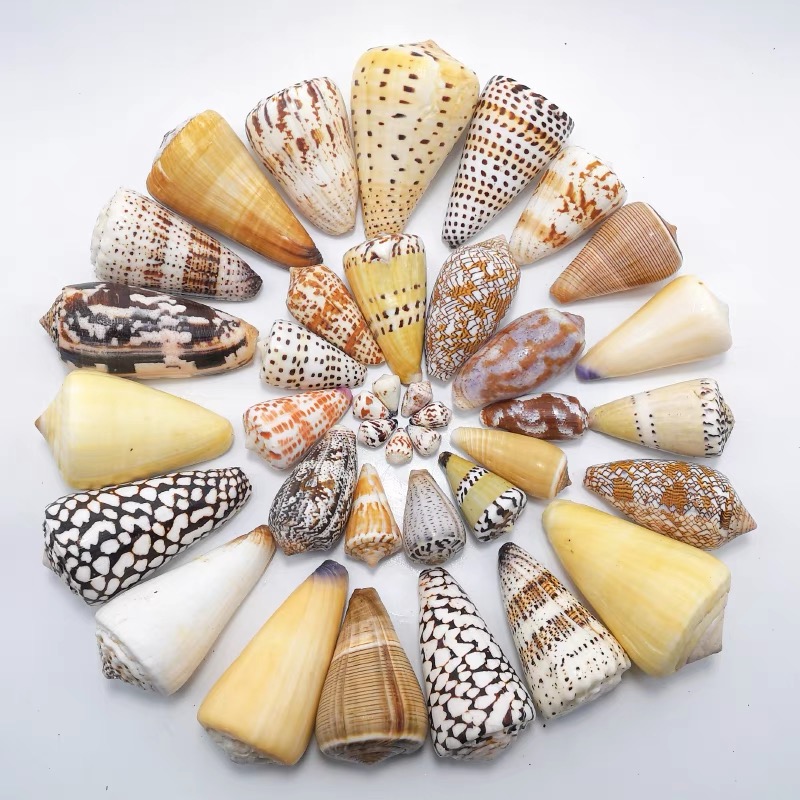
In Victoria, cone snails are common. All cone snail species are carnivorous, using toxins to immobilize and eliminate their prey. Certain tropical species have even been responsible for human fatalities.
The cone snails discovered along Victoria’s rocky shores are primarily nocturnal predators. About 70% of all cone snail types feed on worms, while the remaining 30% are evenly split between snail and fish consumption.
These snails, encompassing approximately 600 distinct species, reside in shallow reefs, often nestled beneath sand, rocks, or coral formations in tropical and subtropical waters. Some varieties have adapted to colder environments.
Instances of injury usually arise from handling the creature. When striking, cone snails extend a long, flexible tube referred to as a proboscis, shooting forth a venomous, spear-like tooth known as a radula. The venom isn’t a single compound but rather a blend of up to 100 different peptides. These peptides vary not only among species but can also change rapidly within an individual snail. The venom for prey differs from the one used for defense against predators.
A sting from a cone snail can lead to mild to moderate pain, often accompanied by acute inflammatory reactions such as redness and swelling. Conustoxins, part of the venom, impact the nervous system and can induce paralysis, potentially progressing to respiratory failure and even death.

Scorpionfish

Scorpionfishes often display cryptic coloration, and the Southern Red Scorpionfish is the prevalent species in Port Phillip Bay. This species is commonly found in depths ranging from just below the surface to 130 m, residing among rocky reefs and soft bottoms in bays and along the coast.
Equipped with venomous spines, scorpionfishes possess a defense mechanism that injects dangerous venom upon piercing a predator. The venomous sting from their spines can prove lethal to other creatures and highly painful to humans.
Similar to lionfish, when a diver comes too close to accidentally touching a scorpionfish, the fish will respond by raising its dorsal fin spines, serving as a warning. Scorpionfishes are adept at being sit-and-wait predators. They primarily hunt during the night and spend the daytime hours resting within crevices. They remain concealed in the shadows of rocks or reefs, pouncing on unsuspecting prey as it swims by.
Comparatively less aggressive than lionfish, scorpionfishes excel in camouflage. While they may pose risks in aquarium settings, they usually inflict injuries when caught by fishermen or encountered by divers. These creatures emphasize the importance of caution and awareness when interacting with marine environments.

Stingray
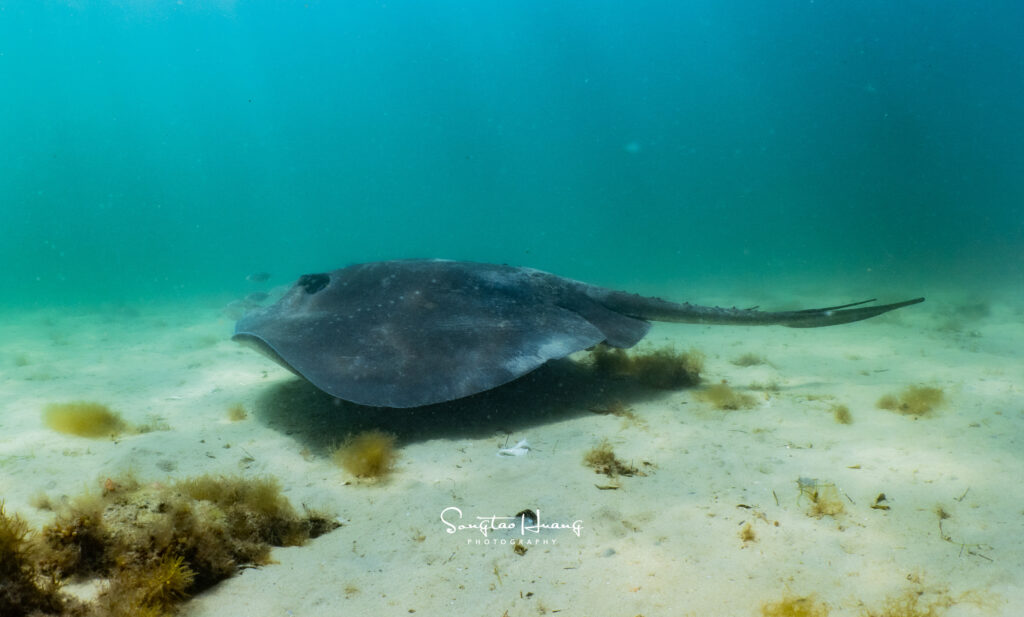
Stingrays exhibit a distinctive flat, disk-shaped body structure complemented by their flexible, tapering tails. Most species of stingrays possess these tails adorned with saw-edged, venomous spines, making them intriguing and potentially hazardous marine creatures.
Among the array of stingrays, the Smooth Stingray emerges as a notable example. Divers often encounter smooth stingrays during shore dives in Melbourne, such as Rye Pier, Brighton Beach, Flinders Pier, Mornington Pier, and Blairgowrie Pier. Known for their non-aggressive nature, this species frequently graces the observations of divers. Positioned approximately at the midpoint along its tail, the Smooth Stingray sports a single venomous spine, often referred to as “the sting.” This spine has the potential to inflict wounds of considerable severity or even fatality. A captivating behavior displayed by this species is the act of raising its tail above its back, reminiscent of the posture of a scorpion.
In the Australian aquatic landscape, numerous species of rays inhabit the waters, each possessing the capacity to deliver stings. These rays are more inclined to remain hidden under the sand unless inadvertently disturbed. However, it’s important to note that these rays are generally not prone to aggression. Instances where humans are stung by rays often occur when individuals inadvertently step on them while navigating shallow waters. Therefore, it’s crucial for divers to avoid using their hands for buoyancy control and to refrain from kicking the sand.

Globefish
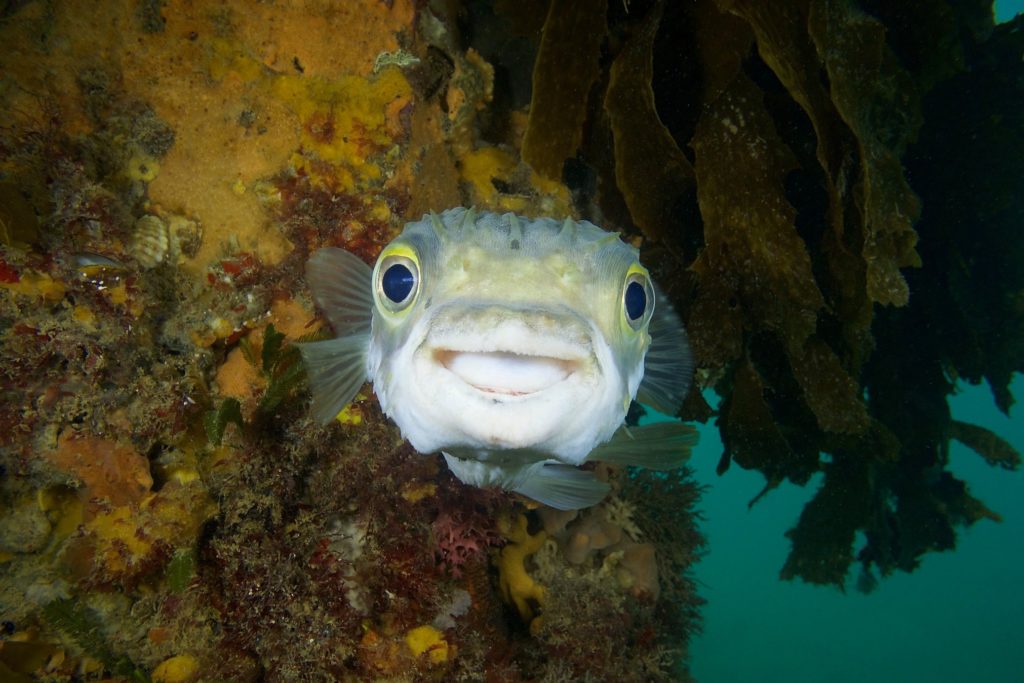
When threatened, globefish swiftly inflate their bodies with air or water, adopting a round shape that causes their spines to protrude, rendering them a challenging target for predators.
These globefish, known as Diodon nicthemerus, are widespread across various habitats, particularly favoring sheltered reefs. They are frequently observed in weedy areas, near jetties, and around pier piles, often found at depths ranging from 0 to 85 meters. In Melbourne, one common location to encounter these globefish is beneath Rye Pier.
Globefish possesses a high level of toxicity that can prove lethal in specific circumstances. Despite their charming appearance, certain internal organs like the liver, eyes, and sometimes the skin contain tetrodotoxin, a substance that not only deters predators due to its foul taste but can also be deadly for other fish. Tetrodotoxin is extremely dangerous for humans, being potentially up to 1,200 times more poisonous than cyanide, and there exists no known antidote. Nonetheless, it’s important to note that these endearing creatures are timid and do not attack without provocation.
For divers, maintaining a respectful distance from these globefish is essential. Chasing or threatening them should be avoided, as these animals are generally shy and not aggressive unless provoked.

Fortunately, these venomous marine creatures typically won’t initiate attacks. Their actions are largely rooted in passive defense, often arising from feeling threatened by the presence of divers. Consequently, it’s imperative to exercise vigilance when encountering them. Avoid pursuing, making physical contact with, or inadvertently stepping on them. Maintaining a safe distance is key to ensuring your safety as well as respecting their habitat.

So are you ready to learn to dive in Melbourne with us? We’d love to be a part of your underwater adventures! If you’d like more information or to make a reservation, fill in our online contact form, or send us an email to: info@oceandivers.com.au
Ocean Divers is a PADI Five Star Instructor Development Centre and a Scubapro Platinum Dealer. Established since 1972, Ocean Divers is the longest operating dive store in Melbourne.
We look forward to scuba diving in Melbourne with you soon!




